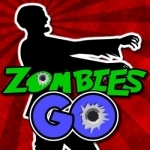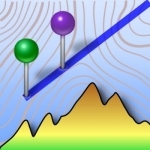
10K Pacer: Run pace training. Run faster
Health & Fitness and Lifestyle
App
Improve your 10K pace and burn more calories. This is an 8 week program that combines running and...

Road Trip Planner™
Travel and Navigation
App
Place pins on a worldwide map for each location you want to visit, then see your route. Enter trip...

5K Pacer: Run pace training, Run faster
Health & Fitness and Lifestyle
App
Improve your 5K pace and burn calories. This Is an 8 week program that combines running and speed...

Runtastic Running Tracker PRO
Health & Fitness and Sports
App
Get in shape with Runtastic GPS Running & Fitness PRO app and start tracking your fitness activities...

MyFitnessPal
Health & Fitness and Lifestyle
App
Whether you want to lose weight, tone up, get healthy, change your habits, or start a new diet,...

Zombies Everywhere! Augmented Reality Apocalypse (Halloween Edition)
Games and Entertainment
App
Fight zombies in the REAL WORLD with your iPhone! You wont believe your eyes! How long can you...

Topo Profiler - elevation graph viewer
Navigation and Education
App
Topo Profiler is an elevation graph viewer. Topo Profiler can create a elevation chart(profile) to...

Dubai Travel Guide and Offline Map
Travel and Navigation
App
Offline Maps and much more! Discover new places and insider tips. Collect, save and organize them...

Singapore Travel Guide and Offline City Map
Travel and Navigation
App
Offline Maps and much more! Discover new places and insider tips. Collect, save and organize them...

Prague Travel Guide and Offline City Map
Travel and Navigation
App
Offline Maps and much more! Discover new places and insider tips. Collect, save and organize them...